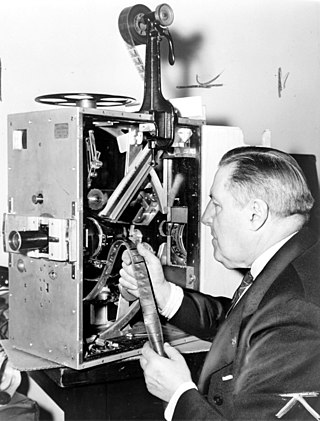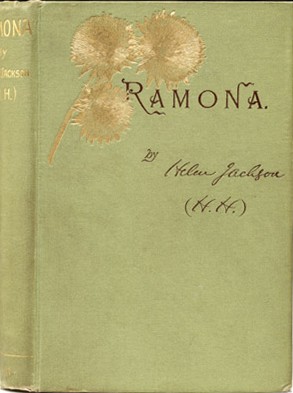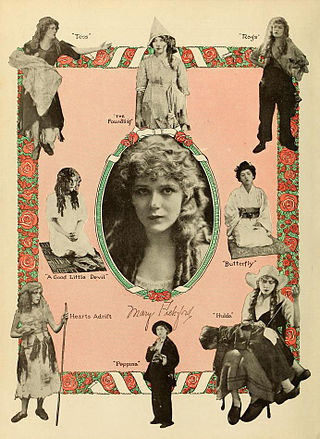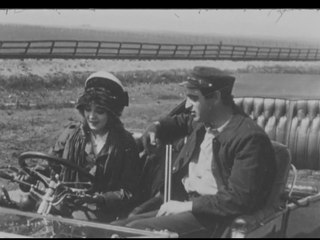
Gottfried Wilhelm Bitzer was an American cinematographer, notable for his close association and pioneering work with D. W. Griffith.

Ramona (1884) is an American novel written by Helen Hunt Jackson. Set in Southern California after the Mexican–American War and annexation of the territory by the United States, it explores the life of a mixed-race Scottish–Native American orphan girl. The story was inspired by the marriage of Hugo Reid and Victoria Reid.

Biograph Studios was an early film studio and laboratory complex, built in 1912 by the Biograph Company at 807 East 175th Street, in The Bronx, New York City, New York.

The Biograph Company, also known as the American Mutoscope and Biograph Company, was a motion picture company founded in 1895 and active until 1916. It was the first company in the United States devoted entirely to film production and exhibition, and for two decades was one of the most prolific, releasing over 3000 short films and 12 feature films. During the height of silent film as a medium, Biograph was the most prominent U.S. film studio and one of the most respected and influential studios worldwide, only rivaled by Germany's UFA, Sweden's Svensk Filmindustri and France's Pathé. The company was home to pioneering director D. W. Griffith and such actors as Mary Pickford, Lillian Gish, and Lionel Barrymore.

Judith of Bethulia (1914) is an American film starring Blanche Sweet and Henry B. Walthall, and produced and directed by D. W. Griffith, based on the play "Judith and the Holofernes" (1896) by Thomas Bailey Aldrich, which itself was an adaptation of the Book of Judith. The film was the first feature-length film made by pioneering film company Biograph, although the second that Biograph released.

Francis J. Grandon was an American silent film actor and director who acted in almost 100 films and directed over 100. Frank Grandon's obituary, printed in newspapers from coast-to- coast, called him "the father of movie serial motion pictures" and a mentor to many young film stars.

The Sealed Room is an eleven-minute film released in September 1909. Produced by the Biograph Company and directed by D. W. Griffith, the drama's cast includes Arthur V. Johnson, Marion Leonard, Henry B. Walthall, Mary Pickford, and Mack Sennett. It was distributed to theaters on a split-reel with another film, the three-minute comedy short The Little Darling.

Friends is a 1912 film written and directed by D. W. Griffith and starring Mary Pickford, Henry B. Walthall, Lionel Barrymore, and Harry Carey. Walthall and Barrymore portray two old friends who each wind up involved with a beautiful girl (Pickford) who lives above a mining camp saloon.

Mary Pickford (1892–1979) was a Canadian-American motion picture actress, producer, and writer. During the silent film era she became one of the first great celebrities of the cinema and a popular icon known to the public as "America's Sweetheart".

The House with Closed Shutters is a 1910 American silent drama film directed by D. W. Griffith and released by the Biograph Company. Prints of The House with Closed Shutters exist in the film archives of the Museum of Modern Art, George Eastman House, and the Library of Congress.
A Feud in the Kentucky Hills is a 1912 American silent drama film directed by D. W. Griffith. The film, by the Biograph Company, was shot on the Hudson Palisades near Fort Lee, New Jersey when many early film studios in America's first motion picture industry were based there at the beginning of the 20th century. Additional filming took place in and around the Pike County town of Milford, Pennsylvania.
The One She Loved is a 1912 American silent drama film directed by D. W. Griffith. The film, by the Biograph Company, was shot in Fort Lee, New Jersey when many early film studios in America's first motion picture industry were based there at the beginning of the 20th century.

The Informer is a 1912 American short drama film directed by D. W. Griffith and featuring Mary Pickford, Henry B. Walthall, Harry Carey, Lionel Barrymore, Dorothy Gish, and Lillian Gish. It was filmed in the Pike County town of Milford, Pennsylvania. Prints of the film survive at the film archive of the Library of Congress.
The Two Brothers is a 1910 American short silent Western film directed by D. W. Griffith.

Ramona is a 1928 American silent drama film directed by Edwin Carewe, based on Helen Hunt Jackson's 1884 novel Ramona, and starring Dolores del Río and Warner Baxter. This was the first United Artists film with a synchronized score and sound effect, but no dialogue, and so was not a talking picture. The novel had been previously filmed by D. W. Griffith in 1910 with Mary Pickford, remade in 1916 with Adda Gleason, and again in 1936 with Loretta Young.
The Inner Circle is a 1912 American silent drama film directed by D. W. Griffith, starring Mary Pickford and Blanche Sweet. A print of the short survives in the film archive of the Library of Congress.
Fate's Turning is a 1911 short silent drama film directed by D. W. Griffith, starring Charles H. West and featuring Stephanie Longfellow.

A Beast at Bay is a 1912 silent short film directed by D. W. Griffith. It was produced and distributed by the Biograph Company. Preserved in paper print form at the Library of Congress.
The Woman from Mellon's is a 1910 silent short film directed by D. W. Griffith and starring Mary Pickford and Billy Quirk. It was produced and distributed by the Biograph Company.
The Little Tease is a 1913 silent black and white film directed by D. W. Griffith, produced by Biograph Company and starring Henry B. Walthall and Mae Marsh.













